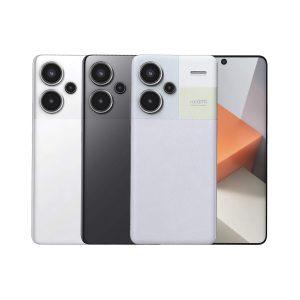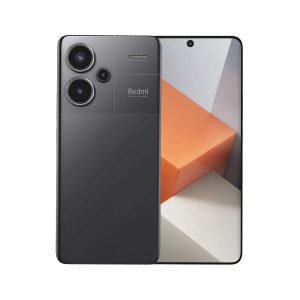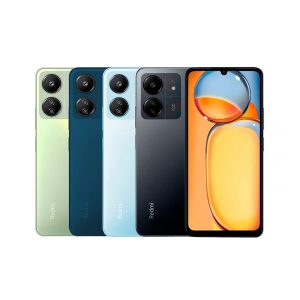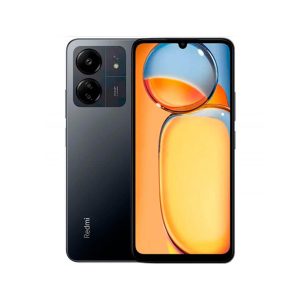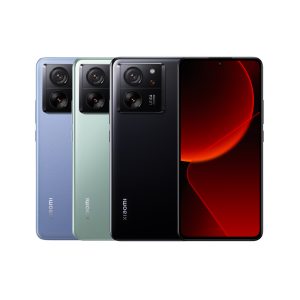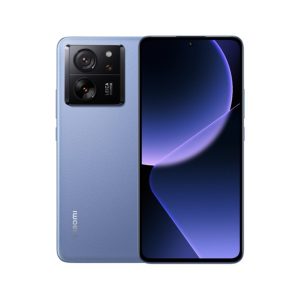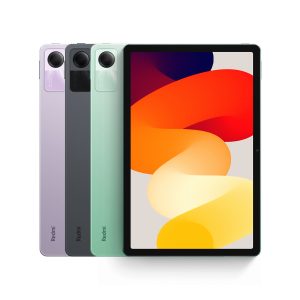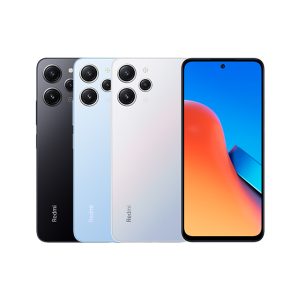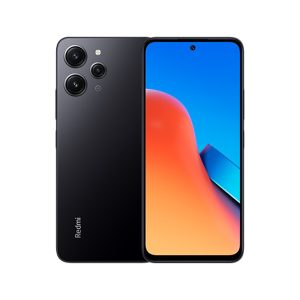Xiaomi Redmi Note 13 Pro+ 5G
The Redmi Note 13 Pro+ 5G, shares a similar 6.7-inch OLED screen and MIUI software as the rest, it stands out with a much faster chip, insane 120W fast charging, beautiful design and a few other notable features.
Other attractions of the Redmi Note 13 Pro+ include an upgraded 200MP primary camera with OIS (optical image stabilization), MediaTek’s 4nm-based Dimensity 7200 Ultra SoC, an IP68 rating for dust and water resistance, up to 12GB of LPDDR5 RAM, and 512GB of UFS 3.1 storage.
Speaking of the display, the 6.67-inch AMOLED screen offers a sharp viewing experience with 1.5K resolution (2,712 x 1,220 pixels) and up to 1800 nits peak brightness. There’s also support for HDR10+ and Dolby Vision for an immersive movie viewing experience. Xiaomi is taking cues from its competitors and maintaining a high PWM dimming to up to 1,920Hz for a reduced flicker on the screen. The display also offers 120Hz refresh rate for a smooth gaming and scrolling experience.
While there’s no Leica partnership in Xiaomi’s mid-range (yet), the Redmi Note 13 Pro+ includes an upgraded 200MP primary camera. For instance, it now utilizes an ISOCELL HP3 sensor (the previous being the ISOCELL HPX sensor), which captures sharper details and more light. As a result, when you zoom in, photos captured in 200MP mode exhibit clearer details, less noise, and more readable text at a distance. Naturally, the file size also increases when you click photos in this mode.
Xiaomi Redmi 13C
The Xiaomi Redmi 13c, among the main characteristics of the Redmi 13C are a 6.74-inch screen with a frame rate of 90 Hz, a 5 MP front camera, a main triple camera (50 MP, 2 and 2 MP), MediaTek Helio G99 SoC, a 5000 mAh battery with 18W charging support. The 13C packs a 8MP front-facing camera; around the back, there's a 50MP f/1.8 main shooter and a 2MP macro. The 5,000mAh battery takes 18W charging but there's a 10W brick in the box.
Xiaomi 13T Pro
The Xiaomi 13T Pro which is packed with the latest hardware and a set of Leica-powered cameras — all under a price tag very few other flagship smartphones have dared to cross.The Meadow Green and Black models have a glossy glass back panel that’s reminiscent of the design of the Xiaomi 13. One difference here is that the leather version is slightly thicker at 8.62mm vs. 8.49mm on the other two. Conversely, the Alpine Blue is actually lighter at just 200 grams vs. 206 grams on the glass variants. The power button and volume rocker are found on the right side; stereo speaker grills, primary mic, USB Type-C port and SIM card slot are found at the bottom; secondary speaker grill, noise-canceling mic and IR blaster up top.It has a flat 6.67-inch CrystalRes Display supporting up to 144Hz refresh rate and 1.5K or 2712 x 1220 pixel resolution.
This display greatly improves the viewing and gaming experience, thanks to a high brightness mode of up to 1200nits and a peak brightness of up to 2600nits, along with 100% DCI-P3 coverage with 68 billion colors. Xiaomi 13T Pro also supports end-to-end HDR10+ and is protected by Corning’s Gorilla Glass 5. The dual speakers support Dolby Atmos which makes it more immersive than regular stereo speakers.
In terms of the camera, the Xiaomi 13T Pro packs a 50MP 24mm f/1.9 wide angle camera with OIS, 50MP 50mm f/1.9 telephoto camera with 2x optical zoom, and 12MP 15mm f/2.2 ultrawide camera. The Xiaomi 13T Pro is tuned by Leica, a popular camera brand, you can choose between two photographic styles — Leica Authentic Look which produces images has a little boost in contrast; and Leica Vibrant, which give you a little bit more vibrancy in every shot.
Xiaomi Redmi Pad SE
The Xiaomi has officially released the Redmi Pad SE in the Philippines. It features an 11-inch display with adaptive 90Hz refresh, 8000mAh battery, and equips the Snapdragon 680 SoC. The chipset is a Snapdragon 680, built on the 6 nm process technology. It is a fairly old platform, as it arrived in early 2021, but we don't expect a powerhouse in this price category. In fact, this could be a great SoC for the Redmi Pad SE – we'll know for sure once we go through our regular tests and benchmarks. Our first impressions from the performance are the UI is smooth, and the 90 Hz could prove itself worthy when browsing or using the native player.
Xiaomi introduced MIUI Pad 14, which is an adapted version of MIUI 14 for big screens. Тhe apps feel native and not stretched; video also looks good. The 11” LCD is certified for low blue light, meaning it would be a great device for reading and learning. In theory, it can reach 400 nits and 1500:1 contrast, but once again, we have to use our own tools to determine how authentic these results are in real-life scenarios.
There are four speakers with Dolby Atmos and Hi-Res Audio support, placed 2x2 on the right and left side (when held horizontally), and we are quite happy to see a 3.5 mm audio jack. The battery has an 8,000 mAh capacity, which sounds promising for an endurance test. However, it is rated for 10W, meaning it would take some time for the cell to get from 0 to 100% with the charger provided in the box.
Xiaomi Redmi 12
The Xiaomi Redmi 12 is targeted at the entry-level segment, the Redmi 12 sports a design reminiscent of the Redmi Note 12 family. Featuring a plastic build with a sleek matte finish. It is available in three color options: blue, white, and black.
The smartphone boasts a 6.79-inch LCD panel with a 90 Hz refresh rate and Full HD+ resolution. The front camera, an 8-megapixel lens for stunning selfies. It’s discreetly tucked within a small hole at the top of the screen.
Notably, the Redmi 12’s primary camera system includes a 50-megapixel main sensor, an 8-megapixel secondary camera equipped with an ultra-wide-angle lens, and a 2-megapixel macro sensor. Powering the Redmi 12 is the MediaTek Helio G88 processor. It’s a chip based on older generations but still built on a 6-nanometer process. It comprises eight cores, including two Cortex-A75 cores clocked at 2 GHz and six Cortex-A55 cores running at 1.8 GHz.
The device offers two configuration options. 4 GB or 8 GB of RAM and 128 GB or 256 GB of storage. Regardless of the choice, users can enjoy a robust 5000 mAh battery complemented by an 18 W charging system. Operating on Android 12, the smartphone comes with the latest version of Xiaomi’s customized user interface, MIUI 14.

